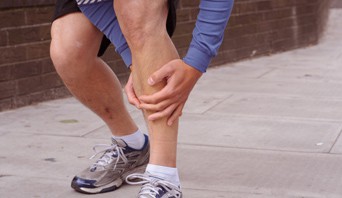One of the most common overuse running injuries is shinsplints, a burning pain that results when small tears occur in the muscles around your shin bone (tibia). If you have it, here’s what you need to know to rest and recover. – BY SEAN FALCONER
The most likely ‘candidates’ for shinsplints, or medial tibial stress syndrome, is new runners or those runners returning from an extended break, and this injury is usually a sign that you've done too much mileage, too soon. Basically, it’s your body saying it can’t handle what you’re putting it through – or that you’re wearing shoes that don’t provide enough cushioning, either because they’re worn out, not meant for long mileage, or just not suited to your biomechanics.
Time to Rest
Many runners try to run through the pain, especially if they’re following a training programme building up to a goal event, but when the first twinges of pain strike, the best thing to do is cut back on mileage and intensity to a comfortable level for a few days or up to a week – in other words, to a level of running where your shins don’t hurt – then slowly up your mileage again using the tried and tested 10 percent rule: Never increase your mileage by more than 10 percent per week.
If all running makes your shins hurt, the best advice is to take a complete break from running and rather ride your bike, do some pool-running or swim, to give your shins a complete rest. Regular icing of the affected area is also recommended, and taping the shins can also relieve the pain and speed up healing, but the easiest and best way to avoid shinsplints is to increase mileage gradually – and have the patience to rest long enough if you do get shinsplints pain.
A handy self-test is to run or hop on the spot. If you feel pain in your shin, rather stop running and rest. (If it is severe pain, even caused by walking, it could be a stress fracture.) If the shin is just tight when you run or hop, run with caution. If the shin tightens up or starts to hurt only once you have been running for a while, back off your mileage and intensity for a while.


